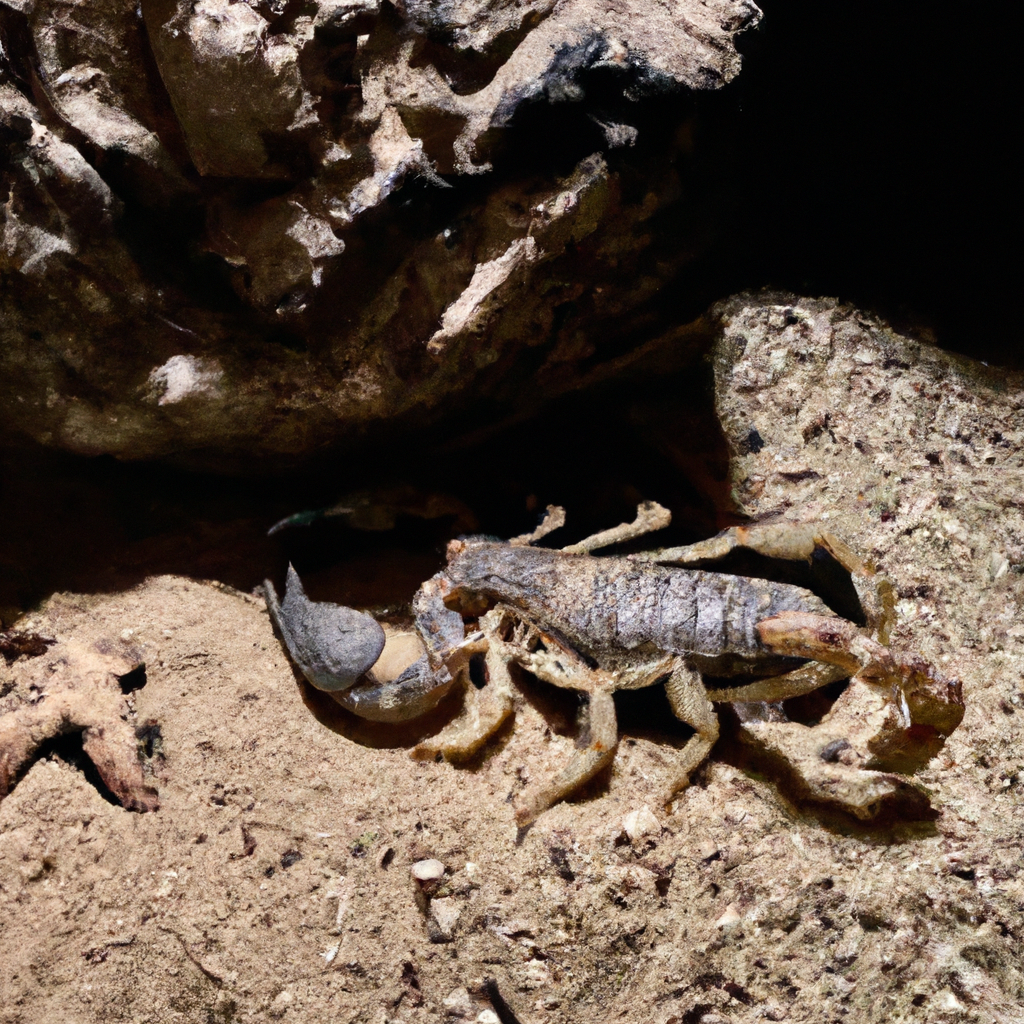In the hidden corners of the natural world, where darkness reigns and mystery abounds, lie creatures that both awe and unsettle the human imagination. Among these enigmatic beings are the tarantulas, scorpions, and arachnids – a fascinating realm of invertebrates that have inspired countless tales of fear and fascination. Delve into the depths of this captivating, albeit spine-tingling, world as we uncover the wonders held within the extraordinary lives of these mesmerizing creatures. Brace yourself, for beyond their eerie reputation lies an intricate world of nature’s creativity, waiting to be discovered and admired. Join us on this exploratory journey through the unknown and open your mind to the extraordinary wonders of the invertebrate world.
1. Descendants of Ancient Giants: Unveiling the Mysterious World of Tarantulas and Scorpions
Tarantulas and scorpions, perhaps the most mystifying creatures on our planet, have captivated humans for centuries. As descendants of ancient giants, their existence dates back millions of years, giving them an otherworldly and intriguing allure. These arachnids, with their unique characteristics and adaptations, continue to reveal the secrets of our natural world.
1. Diverse and Fascinating Species: With over 900 species of tarantulas and 2,000 species of scorpions identified so far, these arthropods display an astonishing variety in size, color, and behavior. From the vivid blue hue of Cobalt Blue Tarantulas to the venomous sting of the Deathstalker Scorpions, their diversity never fails to astonish and captivate scientists and enthusiasts alike.
2. Unbelievable Survival Skills: Tarantulas and scorpions have honed their survival skills to perfection over millions of years. They boast an impressive array of defensive mechanisms, including venomous bites and stings, as well as the ability to camouflage into their surroundings. Whether they’re burrowing into the ground or using their silky webs to ensnare prey, these ancient giants have developed techniques that make them formidable and fascinating creatures.
3. Awe-Inspiring Mating Rituals: The world of tarantulas and scorpions is not only mysterious but also surprisingly romantic. During the mating season, male tarantulas embark on elaborate courtship dances to attract females. With their delicate leg movements and intricate displays of vibrancy, these dances often seem like an enchanting performance. Similarly, male scorpions engage in mesmerizing battles for dominance to win the affection of a female. These rituals remind us of the incredible diversity and beauty within the natural world.
4. Medicinal Potential: While we often associate tarantulas and scorpions with fear and danger, these creatures may hold the key to unlocking medical advancements. Scientists have discovered potential uses for their venom in treating various diseases, including Alzheimer’s, arthritis, and even cancer. By studying the unique composition of their venom, researchers are constantly uncovering new possibilities for therapeutic breakthroughs that could impact human lives in profound ways.
In conclusion, the realm of tarantulas and scorpions continues to bewilder and amaze us. With their diverse species, survival skills, enchanting mating rituals, and promising medicinal potential, these ancient giants remind us of the vast wonders that lie within the natural world.
2. Nature’s Master Architects: Discovering the Fascinating Lives of Invertebrates
Step into the mesmerizing world of invertebrates, where incredible architectural wonders come to life. These fascinating creatures possess a remarkable ability to construct intricate structures that defy our understanding of engineering and design. From the delicate webs spun by spiders to the majestic coral reefs built by tiny polyps, nature’s master architects continually inspire awe and admiration.
1. Ant Cities: Delve into the captivating world of ant colonies, where millions of tiny individuals work together seamlessly to build elaborate tunnels and chambers. Witness their organizational prowess as they divide labor, construct complex systems of transportation, and provide sustainable living spaces for their community.
2. Bee Hives: Behold the marvels of bee architecture as these industrious insects craft their hexagonal masterpieces. Explore the intricate honeycomb structures they create, meticulously designed to maximize efficiency and storage capacity. Marvel at their mathematic precision and engineering finesse, which have inspired human architects for centuries.
3. Termites’ Skyscrapers: Journey into the world of termites, where mounds reach towering heights, rivaling some of our own human constructions. Discover how these tiny creatures construct thermal control systems, ventilation networks, and intricate tunnel systems using nothing but their instincts and saliva. It’s a true testament to their innate architectural genius.
4. Weaverbirds’ Nests: Explore the artistic prowess of weaverbirds and their nest-building mastery. Admire the intricately woven constructions, carefully crafted with a combination of grasses and twigs. Witness the different types of nests they create, from large communal nests to solitary structures, each serving various purposes throughout their lives.
5. Octopus Hideouts: Marvel at the architectural marvels of octopuses, who utilize their exceptional intelligence and versatility to design extraordinary hideouts. Witness their incredible ability to construct intricate dens, using shells, rocks, and other debris. Discover how these structures provide protection and camouflage, reflecting their extraordinary adaptability in the undersea world.
As you embark on this journey, prepare to be enthralled by the remarkable construction skills showcased by these and many other invertebrate species. Nature’s master architects remind us that even the tiniest creatures are capable of creating wonders that rival our own human ingenuity. So, let us unravel the secrets of these extraordinary lives and marvel at the incredible structures they weave throughout our natural world.
3. Arachnids Unmasked: Challenging the Myths Surrounding These Enigmatic Creatures
Arachnids have long captivated the human imagination, often arousing a mix of fascination and fear. But are these enigmatic creatures truly deserving of their notorious reputation? In this revealing exploration, we aim to debunk common myths surrounding arachnids and shed light on their truly remarkable nature.
Myth 1: All Spiders Are Venomous and Dangerous
Contrary to popular belief, not all spiders pose a threat to humans. While it’s true that many spider species possess venom used to incapacitate their prey, the vast majority of spiders have venom that is harmless to humans. Even among those that can cause mild reactions, such as the common house spider, their venom is generally not dangerous unless an individual has specific allergies or sensitivities. Understanding the diversity of spider species is crucial in separating fact from fiction.
Myth 2: Arachnids Are Insects
Arachnids, a class of joint-legged invertebrates, are often wrongly classified as insects. It is essential to differentiate between the two. While insects have six legs, three body segments, and antennae, arachnids, including spiders, scorpions, ticks, and mites, possess four pairs of legs, two body segments, and usually lack antennae. By recognizing these distinctions, we can gain a deeper appreciation for the unique biology and intricacies of these creatures.
Myth 3: All Arachnids Weave Webs
It’s a common misconception that all arachnids construct intricate webs. While spiders are renowned for their web-building abilities, many other arachnids, like scorpions, solifuges, and harvestmen, are predatory and do not spin webs. Instead, they rely on their keen senses and agile hunting techniques to capture their prey. The variety and complexity of survival strategies exhibited by arachnids are truly astounding.
Myth 4: All Arachnids Are Night-Dwellers
Although numerous arachnids are more active during the night, it’s incorrect to assume that all members of this class are exclusively nocturnal. In fact, scorpions and some spider species are more diurnal, meaning they are active during daylight hours. Their adaptation to various environments has allowed arachnids to thrive in diverse habitats, showcasing their ability to adapt and survive.
By shedding light on these commonly misunderstood aspects of arachnids, we hope to uncover the intricate beauty beneath their seemingly enigmatic appearances. Discovering the truth behind these creatures enables us to appreciate their vital role in ecosystems and dispels the unwarranted fears that have plagued them for so long.
4. The Unsung Heroes: Unraveling the Ecological Importance of Invertebrates in Our Ecosystems
When we think of creatures that play a crucial role in maintaining the balance of our ecosystems, charismatic mammals like elephants and tigers often come to mind. However, it’s the often overlooked invertebrates that truly deserve the title of unsung heroes. Found in every corner of the world, these tiny organisms have a monumental impact on the ecosystems they inhabit. Let’s delve into the remarkable ecological importance of invertebrates and why they are the unseen champions of our environment.
1. Recycling powerhouses: Invertebrates such as earthworms and dung beetles are nature’s ultimate recyclers. They break down organic matter and return vital nutrients to the soil, enabling the growth of plants and sustaining the food chain. Without these tireless workers, our environment would drown in waste and our soils would become barren.
2. Pollination specialists: Insects like bees, butterflies, and moths ensure the propagation of plants through their crucial role as pollinators. They transfer pollen from one flower to another, allowing the plants to reproduce and produce fruits or seeds. Around 75% of flowering plants worldwide depend on these industrious invertebrates for survival – a fact that highlights their essential contribution to the biodiversity of our ecosystems and the food we rely on.
3. Nature’s clean-up crew: Aquatic invertebrates like freshwater shrimps, caddisflies, and mussels serve as nature’s filtration system. They feed on decaying matter, excess nutrients, and harmful substances, purifying our rivers, lakes, and oceans. By maintaining the water quality, they create a suitable habitat for aquatic plants and other species.
4. Food web foundation: Invertebrates act as a fundamental component in the food chain, serving as a primary food source for numerous species. They provide sustenance to fish, birds, reptiles, and mammals, supporting the survival and diverse communities of animals higher up the food web. Without them, the delicate balance of our ecosystems would crumble, leading to cascading effects throughout the entire ecosystem.
In conclusion, while they may lack the grandeur of larger animals, invertebrates hold the key to maintaining the intricate web of life on our planet. Their vital roles as recyclers, pollinators, water purifiers, and the foundation of countless food chains cannot be understated. It’s high time we recognize and appreciate the remarkable ecological importance of these unsung heroes and take active steps to protect and conserve them for the sake of our environment and future generations.
Invertebrates are a major asset to the world’s biodiversity, and we can all appreciate their wonder and magnificence. From the strong legs of a tarantula to the imposing claw of a scorpion, invertebrates stir up our curiosity and inspire awe. Truly, these amazing arachnids are a marvel of the natural world.


